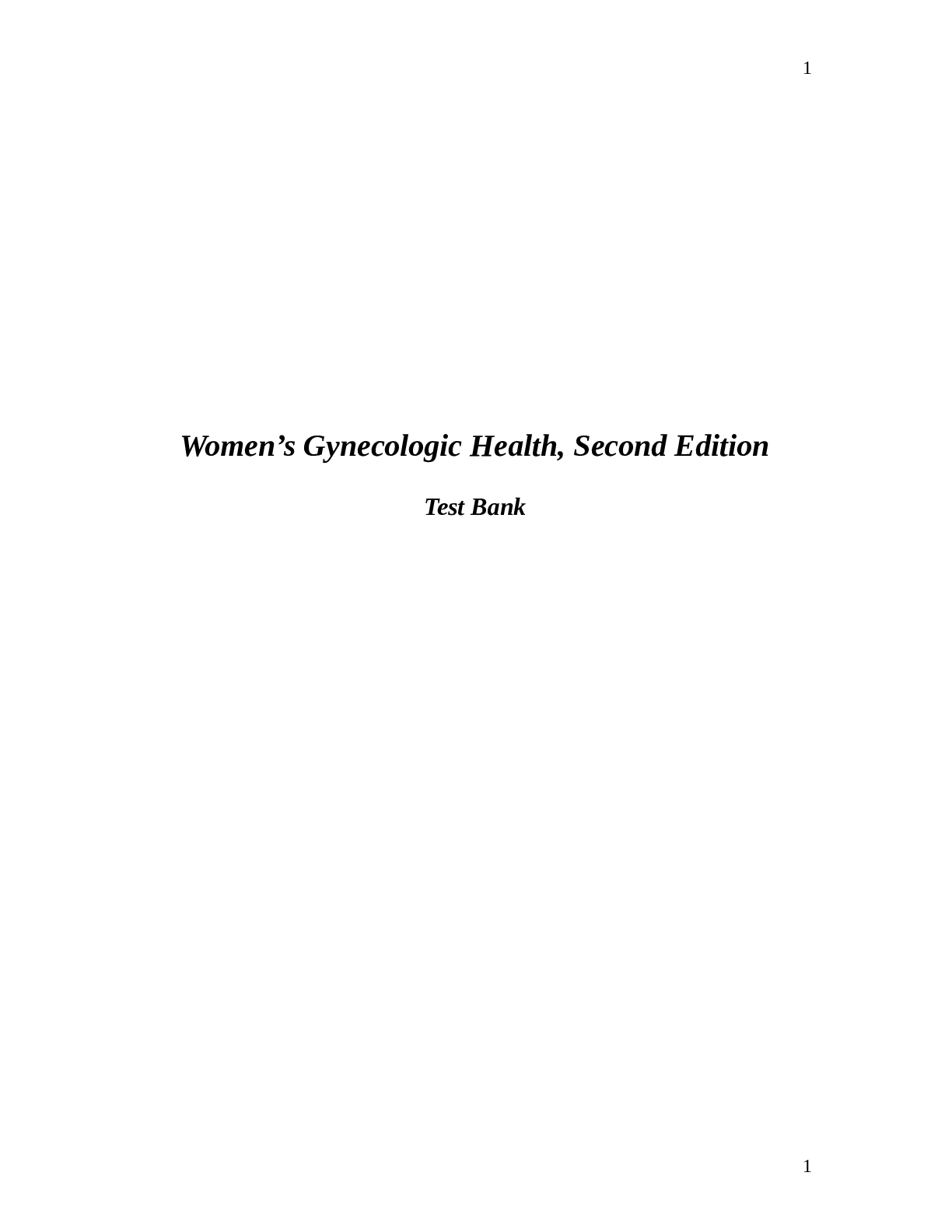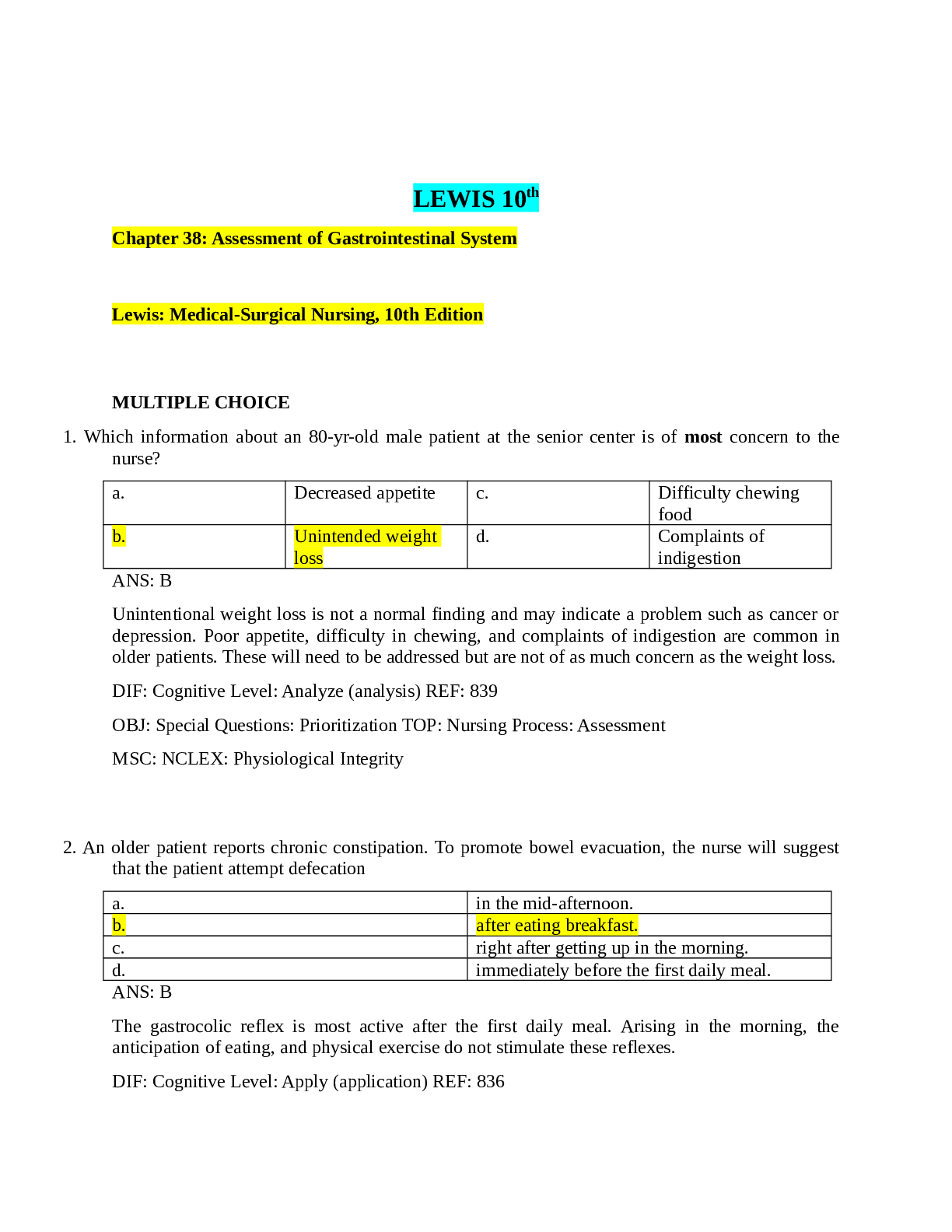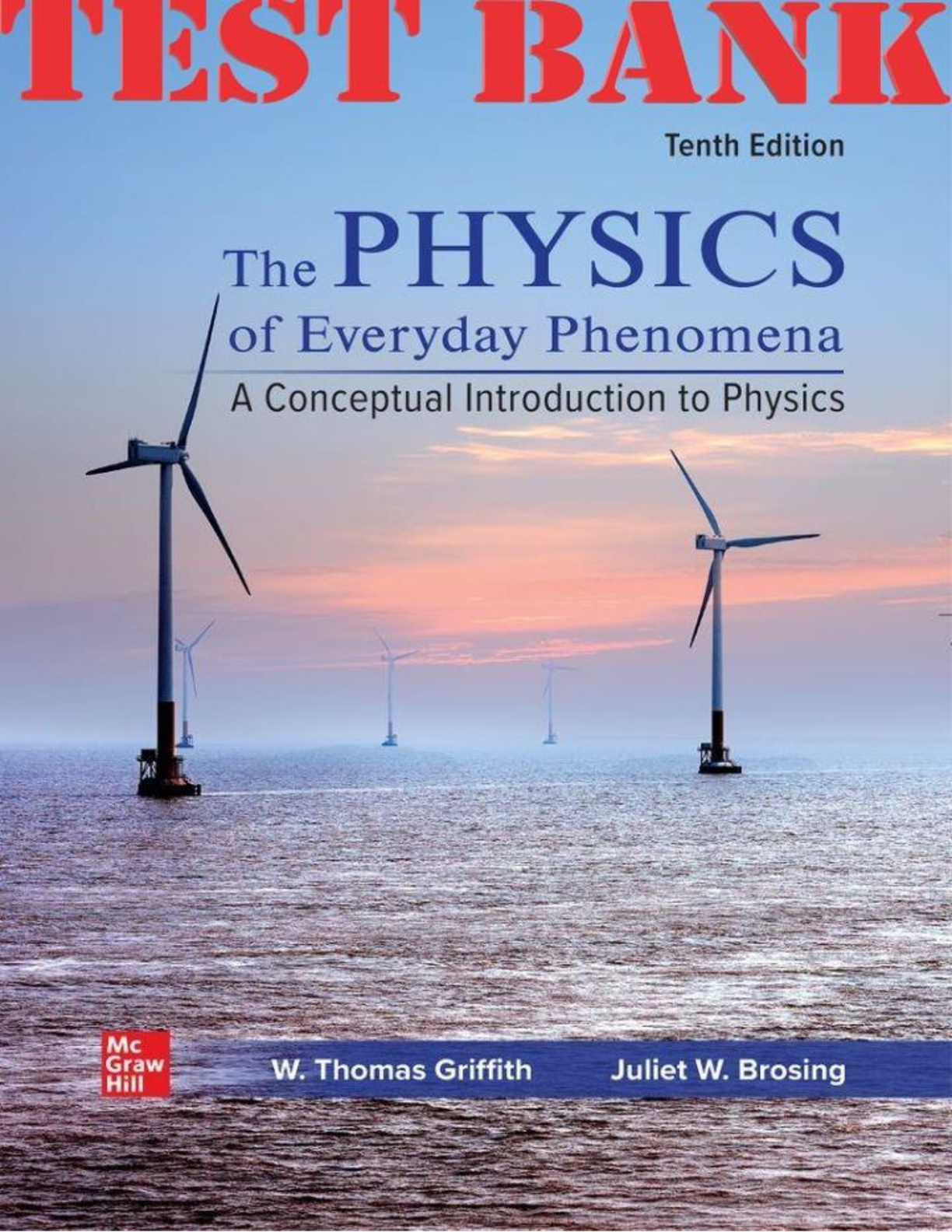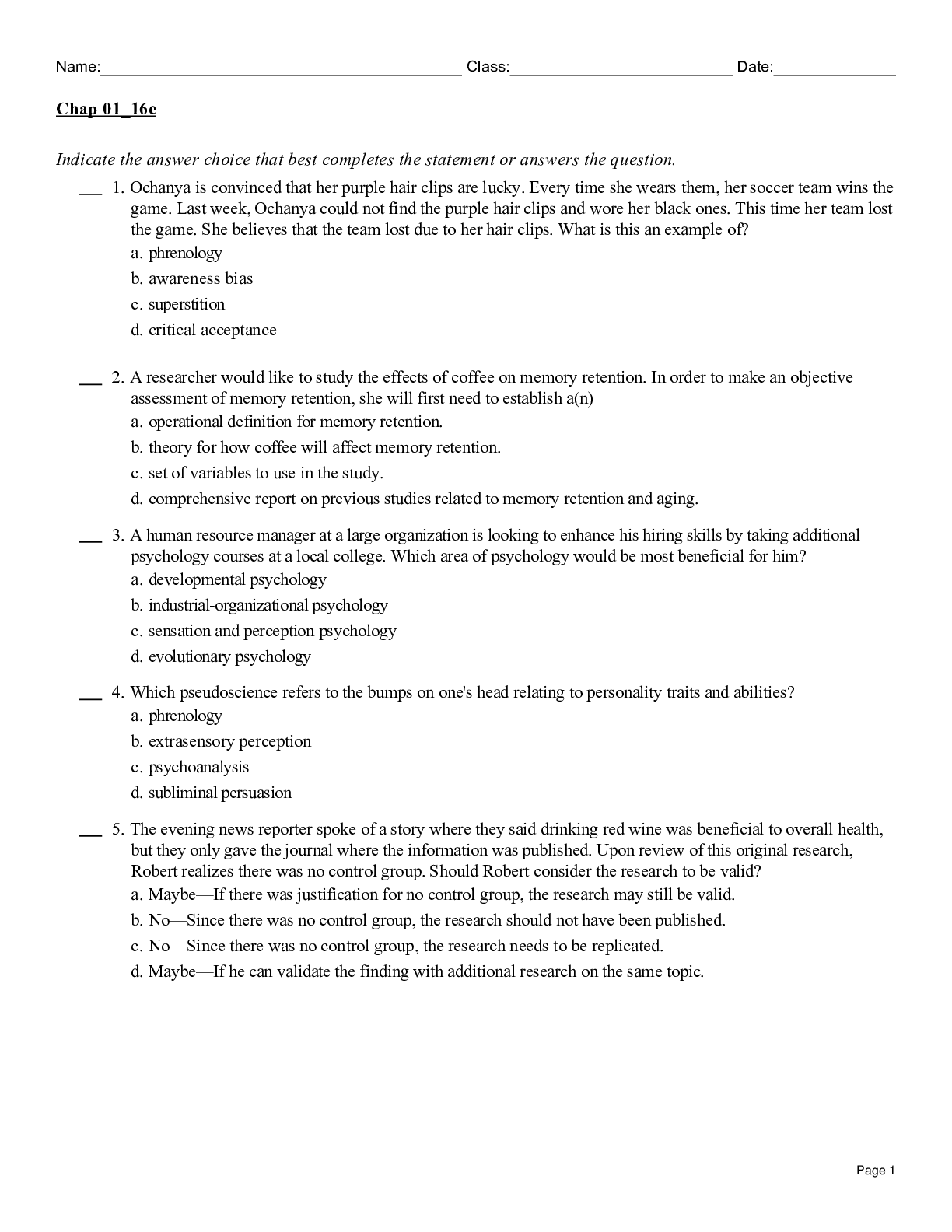*NURSING > TEST BANKS > Chapter 8: The Thorax and Lungs ; Bates’ Guide to Physical Examination and History Taking, 12th Ed (All)
Chapter 8: The Thorax and Lungs ; Bates’ Guide to Physical Examination and History Taking, 12th Edition
Document Content and Description Below
Bates’ Guide to Physical Examination and History Taking, 12th Edition Chapter 8: The Thorax and Lungs Multiple Choice 1. A 21-year-old college senior presents to your clinic, complaining of short ... ness of breath and a nonproductive nocturnal cough. She states she used to feel this way only with extreme exercise, but lately she has felt this way continuously. She denies any other upper respiratory symptoms, chest pain, gastrointestinal symptoms, or urinary tract symptoms. Her past medical history is significant only for seasonal allergies, for which she takes a nasal steroid spray but is otherwise on no other medications. She has had no surgeries. Her mother has allergies and eczema and her father has high blood pressure. She is an only child. She denies smoking and illegal drug use but drinks three to four alcoholic beverages per weekend. She is a junior in finance at a local university and she has recently started a job as a bartender in town. On examination she is in no acute distress and her temperature is 98.6. Her blood pressure is 120/80, her pulse is 80, and her respirations are 20. Her head, eyes, ears, nose, and throat examinations are essentially normal. Inspection of her anterior and posterior chest shows no abnormalities. On auscultation of her chest, there is decreased air movement and a high-pitched whistling on expiration in all lobes. Percussion reveals resonant lungs. Which disorder of the thorax or lung does this best describe? A) Spontaneous pneumothorax B) Chronic obstructive pulmonary disease (COPD) C) Asthma D) Pneumonia Ans: C Chapter: 08 Feedback: Asthma causes shortness of breath and a nocturnal cough. It is often associated with a history of allergies and can be made worse by exercise or irritants such as smoke in a bar. On auscultation there can be normal to decreased air movement. Wheezing is heard on expiration and sometimes inspiration. The duration of wheezing in expiration usually correlates with severity of illness, so it is important to document this length (e.g., wheezes heard halfway through exhalation). Realize that in severe asthma, wheezes may not be heard because of the lack of air movement. Paradoxically, these patients may have more wheezes after treatment, which actually indicates an improvement in condition. Peak flow measurements help to discern this. TEST BANK FOR BATES' GUIDE TO PHYSICAL EXAMINATION AND HISTORY TAKING 12TH EDITION BY BICKLEY NURSINGTB.COM N U R S I N G T B . C O M 2. A 47-year-old receptionist comes to your office, complaining of fever, shortness of breath, and a productive cough with golden sputum. She says she had a cold last week and her symptoms have only gotten worse, despite using over-the-counter cold remedies. She denies any weight gain, weight loss, or cardiac or gastrointestinal symptoms. Her past medical history includes type 2 diabetes for 5 years and high cholesterol. She takes an oral medication for both diseases. She has had no surgeries. She denies tobacco, alcohol, or drug use. Her mother has diabetes and high blood pressure. Her father passed away from colon cancer. On examination you see a middle-aged woman appearing her stated age. She looks ill and her temperature is elevated, at 101. Her blood pressure and pulse are unremarkable. Her head, eyes, ears, nose, and throat examinations are unremarkable except for edema of the nasal turbinates. On auscultation she has decreased air movement, and coarse crackles are heard over the left lower lobe. There is dullness on percussion, increased fremitus during palpation, and egophony and whispered pectoriloquy on auscultation. What disorder of the thorax or lung best describes her symptoms? A) Spontaneous pneumothorax B) Chronic obstructive pulmonary disease (COPD) C) Asthma D) Pneumonia Ans: D Chapter: 08 Feedback: Pneumonia is usually associated with dyspnea, cough, and fever. On auscultation there can be coarse or fine crackles heard over the affected lobe. Percussion over the affected area is dull and there is often an increase in fremitus. Egophony and pectoriloquy are heard because of increased transmission of high-pitched components of sounds. These higher frequencies are usually filtered out by the multiple air-filled chambers of the alveoli. 3. A 17-year-old high school senior presents to your clinic in acute respiratory distress. Between shallow breaths he states he was at home finishing his homework when he suddenly began having right-sided chest pain and severe shortness of breath. He denies any recent traumas or illnesses. His past medical history is unremarkable. He doesn't smoke but drinks several beers on the weekend. He has tried marijuana several times but denies any other illegal drugs. He is an honors student and is on the basketball team. His parents are both in good health. He denies any recent weight gain, weight loss, fever, or night sweats. On examination you see a tall, thin young man in obvious distress. He is diaphoretic and is breathing at a rate of 35 breaths per minute. On auscultation you hear no breath sounds on the right side of his superior chest wall. On percussion he is hyperresonant over the right upper lobe. With palpation he has absent fremitus over the right upper lobe. What disorder of the thorax or lung best describes his symptoms? TEST BANK FOR BATES' GUIDE TO PHYSICAL EXAMINATION AND HISTORY TAKING 12TH EDITION BY BICKLEY NURSINGTB.COM N U R S I N G T B . C O M A) Spontaneous pneumothorax B) Chronic obstructive pulmonary disease (COPD) C) Asthma D) Pneumonia Ans: A Chapter: 08 Feedback: Spontaneous pneumothorax occurs suddenly, causing severe dyspnea and chest pain on the affected side. It is more common in thin young males. On auscultation of the affected side there will be no breath sounds and on percussion there is hyperresonance or tympany. There will be an absence of fremitus to palpation. Given this young man's habitus and pneumothorax, you may consider looking for features of Marfan's syndrome. Read more about this condition. 4. A 62-year-old construction worker presents to your clinic, complaining of almost a year of chronic cough and occasional shortness of breath. Although he has had worsening of symptoms occasionally with a cold, his symptoms have stayed about the same. The cough has occasional mucous drainage but never any blood. He denies any chest pain. He has had no weight gain, weight loss, fever, or night sweats. His past medical history is significant for high blood pressure and arthritis. He has smoked two packs a day for the past 45 years. He drinks occasionally but denies any illegal drug use. He is married and has two children. He denies any foreign travel. His father died of a heart attack and his mother died of Alzheimer's disease. On examination you see a man looking slightly older than his stated age. His blood pressure is 130/80 and his pulse is 88. He is breathing comfortably with respirations of 12. His head, eyes, ears, nose, and throat examinations are unremarkable. His cardiac examination is normal. On examination of his chest, the diameter seems enlarged. Breath sounds are decreased throughout all lobes. Rhonchi are heard over all lung fields. There is no area of dullness and no increased or decreased fremitus. What thorax or lung disorder is most likely causing his symptoms? A) Spontaneous pneumothorax B) Chronic obstructive pulmonary disease (COPD) C) Asthma D) Pneumonia Ans: B Chapter: 08 Feedback: This disorder is insidious in onset and generally affects the older population with a smoking history. The diameter of the chest is often enlarged like a barrel. Percussing the chest elicits hyperresonance, and during auscultation there are often distant breath sounds. Coarse breath sounds of rhonchi are also often heard. It is important to quantify this patient's exercise capacity because it may affect his employment and also allows you to follow for progression of his disease. You must offer smoking cessation as an option. TEST BANK FOR BATES' GUIDE TO PHYSICAL EXAMINATION AND HISTORY TAKING 12TH EDITION BY BICKLEY NURSINGTB.COM N U R S I N G T B . C O M 5. A 36-year-old teacher presents to your clinic, complaining of sharp, knifelike pain on the left side of her chest for the last 2 days. Breathing and lying down make the pain worse, while sitting forward helps her pain. Tylenol and ibuprofen have not helped. Her pain does not radiate to any other area. She denies any upper respiratory or gastrointestinal symptoms. Her past medical history consists of systemic lupus. She is divorced and has one child. She denies any tobacco, alcohol, or drug use. Her mother has hypothyroidism and her father has high blood pressure. On examination you find her to be distressed, leaning over and holding her left arm and hand to her left chest. Her blood pressure is 130/70, her respirations are 12, and her pulse is 90. On auscultation her lung fields have normal breath sounds with no rhonchi, wheezes, or crackles. Percussion and palpation are unremarkable. Auscultation of the heart has an S1 and S2 with no S3 or S4. A scratching noise is heard at the lower left sternal border, coincident with systole; leaning forward relieves some of her pain. She is nontender with palpation of the chest wall. What disorder of the chest best describes this disorder? A) Angina pectoris B) Pericarditis C) Dissecting aortic aneurysm D) Pleural pain Ans: B Chapter: 08 Feedback: The pain from pericarditis is usually sharp and knifelike and is located over the left side of the chest. Change of position, breathing, and coughing often make the pain worse, whereas leaning forward improves the pain. Pericarditis is often seen in rheumatologic diseases such as systemic lupus and in patients with chronic kidney disease. Patients also experience this after a myocardial infarction. You can read more about Dressler's syndrome. 6. A 68-year-old retired postman presents to your clinic, complaining of dull, intermittent left-sided chest pain over the last few weeks. The pain occurs after he mows his lawn or chops wood. He says that the pain radiates to the left side of his jaw but nowhere else. He has felt light-headed and nauseated with the pain but has had no other symptoms. He states when he sits down for several minutes the pain goes away. Ibuprofen, Tylenol, and antacids have not improved his symptoms. He reports no recent weight gain, weight loss, fever, or night sweats. He has a past medical history of high blood pressure and arthritis. He quit smoking 10 years ago after smoking one pack a day for 40 years. He denies any recent alcohol use and reports no drug use. He is married and has two healthy children. His mother died of breast cancer and his father died of a stroke. His younger brother has had bypass surgery. On examination you find him healthy-appearing and breathing comfortably. His blood pressure is 140/90 and he has a pulse of 80. His head, eyes, ears, nose, and throat examinations are unremarkable. His lungs have normal breath sounds and there are no abnormalit [Show More]
Last updated: 2 years ago
Preview 1 out of 12 pages

Buy this document to get the full access instantly
Instant Download Access after purchase
Buy NowInstant download
We Accept:

Also available in bundle (1)
Click Below to Access Bundle(s)

Bates’ Guide to Physical Examination and History Taking, 12th Edition (Chapter 1-20)
Bates’ Guide to Physical Examination and History Taking, 12th Edition Chapter 1: Foundations for Clinical Proficiency Multiple Choice 1. For which of the following patients would a comprehensive he...
By Nutmegs 3 years ago
$20
20
Reviews( 0 )
$11.00
Can't find what you want? Try our AI powered Search
Document information
Connected school, study & course
About the document
Uploaded On
May 06, 2022
Number of pages
12
Written in
All
Additional information
This document has been written for:
Uploaded
May 06, 2022
Downloads
0
Views
139




.png)



.png)

.png)















